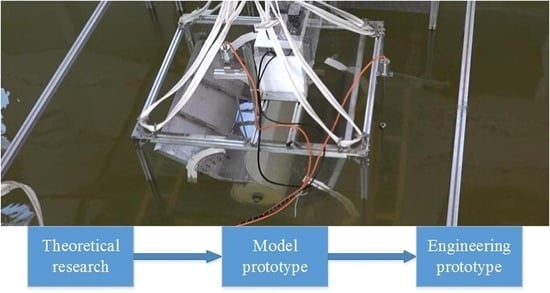Mathematical Modeling and Experimental Verification of a New Wave Energy Converter
Abstract
:1. Introduction
2. Engineering Model
3. Water Oscillation Mathematical Model
4. Physical Model Regular Wave Experiment
5. Conclusions
Author Contributions
Funding
Acknowledgments
Conflicts of Interest
References
- Østergaard, P.A.; Duic, N.; Noorollahi, Y. Sustainable development using renewable energy technology. Renew. Energy 2020, 146, 2430–2437. [Google Scholar] [CrossRef]
- Mwasilu, F.; Jung, J. Potential for power generation from ocean wave renewable energy source: A comprehensive review on state-of-the-art technology and future prospects. IET Renew. Power Gener. 2019, 13, 363–375. [Google Scholar] [CrossRef]
- Segura, E.; Morales, R.; Somolinos, J.A. A strategic analysis of tidal current energy conversion systems in the European Union. Appl. Energy 2018, 212, 527–551. [Google Scholar] [CrossRef]
- Melikoglu, M. Current status and future of ocean energy sources: A global review. Ocean Eng. 2018, 148, 563–573. [Google Scholar] [CrossRef]
- Roy, A.; Auger, F.; Dupriez-Robin, F. Electrical Power Supply of Remote Maritime Areas: A Review of Hybrid Systems Based on Marine Renewable Energies. Energies 2018, 11, 1904. [Google Scholar] [CrossRef] [Green Version]
- Lehmann, M.; Karimpour, F.; Goudey, C.A. Ocean wave energy in the United States: Current status and future perspectives. Renew. Sustain. Energy Rev. 2017, 74, 1300–1313. [Google Scholar] [CrossRef]
- Peiyue, L.; Lu, L.; Xiaohua, G. Talking about the issue of global warming. Environ. Sci. Manag. 2009, 34, 49–52. [Google Scholar]
- Aderinto, T.; Li, H. Ocean Wave Energy Converters: Status and Challenges. Energies 2018, 11, 1250. [Google Scholar] [CrossRef] [Green Version]
- Wang, Z.; Carriveau, R.; Ting, D.S.K. A review of marine renewable energy storage. Int. J. Energy Res. 2018, 43, 6108–6150. [Google Scholar] [CrossRef]
- Hemer, M.A.; Zieger, S.; Durrant, T. A revised assessment of Australia’s national wave energy resource. Renew. Energy 2017, 114, 85–107. [Google Scholar] [CrossRef]
- Chang, Y.; Wang, N. Legal system for the development of marine renewable energy in China. Renew. Sustain. Energy Rev. 2017, 75, 192–196. [Google Scholar] [CrossRef]
- Chao, P. A Preliminary Study on the Sustainable Development of My Country’s Islands. Ph.D. Thesis, Ocean University of China, Qingdao, China, 2006. [Google Scholar]
- Chongwei, Z.; Lin, Z.; Lijia, Z. The seasonal variation characteristics of waves and wave energy in Xisha and Nansha waters. Adv. Mar. Sci. 2011, 29, 419–426. [Google Scholar]
- Doyle, S.; Aggidis, G.A. Development of multi-oscillating water columns as wave energy converters. Renew. Sustain. Energy Rev. 2019, 107, 75–86. [Google Scholar] [CrossRef] [Green Version]
- Kaijian, F.; Guangtao, N.; Liyi, H. Research on Wave Energy Development and Utilization of South China Sea Islands. Eng. Technol. Res. 2020, 5, 216–217. [Google Scholar]
- Wan, Y.; Fan, C.; Dai, Y. Assessment of the Joint Development Potential of Wave and Wind Energy in the South China Sea. Energies 2018, 11, 398. [Google Scholar] [CrossRef] [Green Version]
- Magagna, D.; Uihlein, A. Ocean energy development in Europe: Current status and future perspectives. Int. J. Mar. Energy. 2015, 11, 84–104. [Google Scholar] [CrossRef]
- Khan, N.; Kalair, A.; Abas, N. Review of ocean tidal, wave and thermal energy technologies. Renew. Sustain. Energy Rev. 2017, 72, 590–604. [Google Scholar] [CrossRef]
- Li, Y.; Pan, D. The ebb and flow of tidal barrage development in Zhejiang Province, China. Renew. Sustain. Energy Rev. 2017, 80, 380–389. [Google Scholar] [CrossRef]
- Xiangnan, W.; Ning, J.; Caixia, X. Thoughts on the industrialization of marine renewable energy in my country. Ocean Dev. Manag. 2019, 36, 14–18. [Google Scholar]
- Weimin, L.; Lei, L.; Fengyun, C. Progress in China’s marine renewable energy technology. Sci. Technol. Rev. 2020, 38, 27–39. [Google Scholar]
- Qijuan, C.; Gongzheng, G.; Xuhui, Y. Opportunities and Challenges of Hydropower and New Energy: Research Progress of Wave Energy Technology. Hyd. New Energy 2020, 34, 1–6. [Google Scholar]
- Zhe, M.; Naibo, H.; Youxun, L. Research on the development status and countermeasures of marine renewable energy industry in Shandong Province. Sci. Technol. Ind. 2020, 20, 63–67. [Google Scholar]
- Linsheng, H.; Jing, W.; Jia, G. Analysis of wave energy resources in the northern waters of Chu Island, Shandong. Acta Energy Sol. Sin. 2020, 41, 165–171. [Google Scholar]
- Yong, W.; Chenqing, F.; Yongshou, D. Study on the wave energy development potential of the coastal waters around Shandong Peninsula. Acta Energy Sol. Sin. 2018, 39, 3311–3318. [Google Scholar]
- Shouwei, Z.; Qingping, L. Exploit ocean energy and build a maritime power. Sci. Technol. Rev. 2020, 38, 17–26. [Google Scholar]
- Qiu, S.; Liu, K.; Wang, D. A comprehensive review of ocean wave energy research and development in China. Renew. Sustain. Energy Rev. 2019, 113, 109271. [Google Scholar] [CrossRef]
- The 13th Five-Year Plan for Renewable Energy Development (Part 1). Solar Energy 2017, 2, 5–11.
- The 13th Five-Year Plan for Renewable Energy Development (Part 2). Solar Energy 2017, 3, 5–12.
- Uihlein, A.; Magagna, D. Wave and tidal current energy-A review of the current state of research beyond technology. Renew. Sustain. Energy Rev. 2016, 58, 1070–1081. [Google Scholar] [CrossRef]
- Neill, S.P.; Vögler, A.; Goward-Brown, A.J. The wave and tidal resource of Scotland. Renew. Energy 2017, 114, 3–17. [Google Scholar] [CrossRef]
- Zhou, Z.; Benbouzid, M.; Charpentier, J. Developments in large marine current turbine technologies-A review. Renew. Sustain. Energy Rev. 2017, 71, 852–858. [Google Scholar] [CrossRef]
- Guillou, N.; Lavidas, G.; Chapalain, G. Wave Energy Resource Assessment for Exploitation-A Review. J. Mar. Sci. Eng. 2020, 8, 705. [Google Scholar] [CrossRef]
- Liu, Z.; Hyun, B.; Hong, K. Numerical Study of Air Chamber for Oscillating Water Column Wave Energy Convertor. China Ocean Eng. 2011, 25, 169–178. [Google Scholar] [CrossRef]
- Martin, D.; Li, X.; Chen, C. Numerical analysis and wave tank validation on the optimal design of a two-body wave energy converter. Renew. Energy 2020, 145, 632–641. [Google Scholar] [CrossRef]
- Martins, J.C.; Goulart, M.M.; Gomes, M.D.N. Geometric evaluation of the main operational principle of an overtopping wave energy converter by means of Constructal Design. Renew. Energy 2018, 118, 727–741. [Google Scholar] [CrossRef]
- Ahamed, R.; Mckee, K.; Howard, I. Advancements of wave energy converters based on power take off (PTO) systems: A review. Ocean Eng. 2020, 204, 107248. [Google Scholar] [CrossRef]
- Nguyen, H.P.; Wang, C.M.; Tay, Z.Y. Wave energy converter and large floating platform integration: A review. Ocean Eng. 2020, 213, 107768. [Google Scholar] [CrossRef]
- Li, N.; Cheung, K.F.; Cross, P. Numerical wave modeling for operational and survival analyses of wave energy converters at the US Navy Wave Energy Test Site in Hawaii. Renew. Energy 2020, 161, 240–256. [Google Scholar] [CrossRef]
- Vieira, F.; Cavalcante, G.; Campos, E. Wave energy flux variability and trend along the United Arab Emirates coastline based on a 40-year hindcast. Renew. Energy 2020, 160, 1194–1205. [Google Scholar] [CrossRef]
- Mctiernan, K.L.; Sharman, K.T. Review of Hybrid Offshore Wind and Wave Energy Systems. J. Phys. Conf. Ser. 2020, 1452, 12016. [Google Scholar] [CrossRef]
- Ocean Energy Systems. Annual Report Ocean Energy Systems 2016. 2017. Available online: https://report2016.ocean-energy-systems.org/ (accessed on 11 March 2018).
- Xiaochen, G.; Shuiwei, T.; Yihong, W. Research on the wave energy capture device in the flow channel of the double-click water wheel. J. Ocean Technol. 2014, 33, 17–24. [Google Scholar]
- Xiaochen, G.; Yihong, W. Research on power bandwidth design method of wave energy utilization device of direct drive turbine. J. Hydrog. Eng. 2013, 32, 197–203. [Google Scholar]
- Xiaochen, G. Theory and Practice of Research and Development of Double-Click Turbine Wave Energy Power Generation Device; China Water Resources and Hydropower Press: Beijing, China, 2017; pp. 23–25. [Google Scholar]
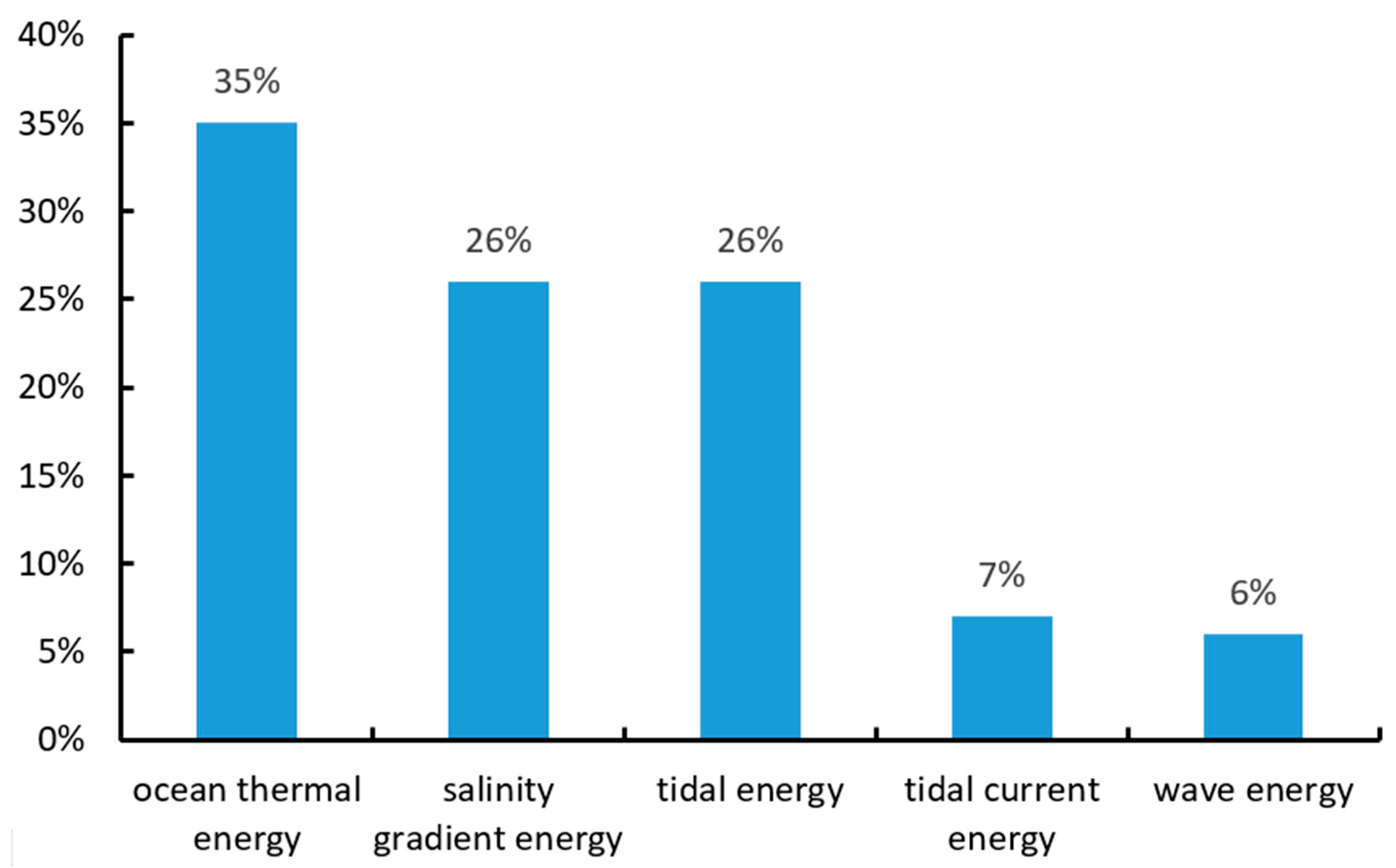

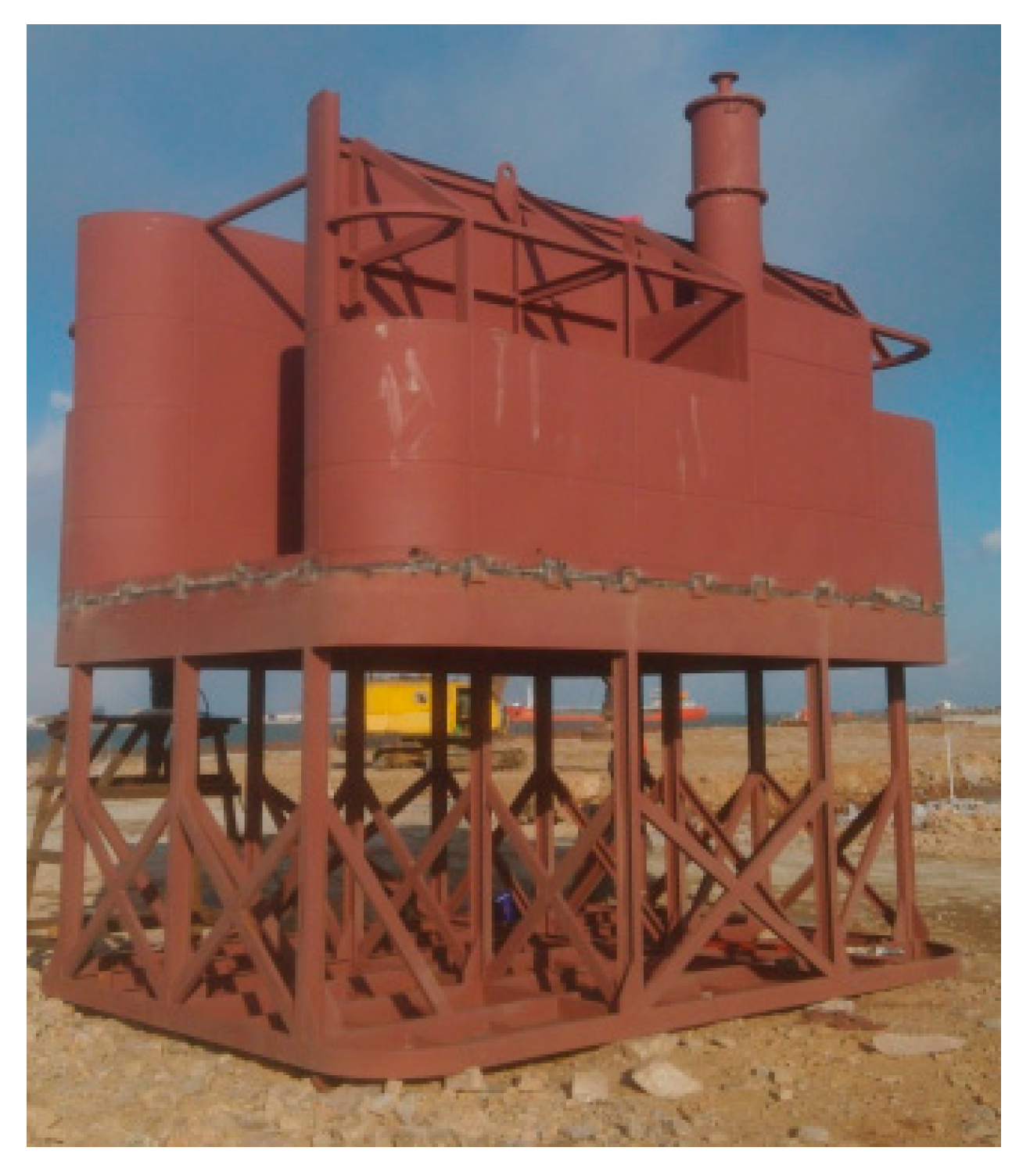
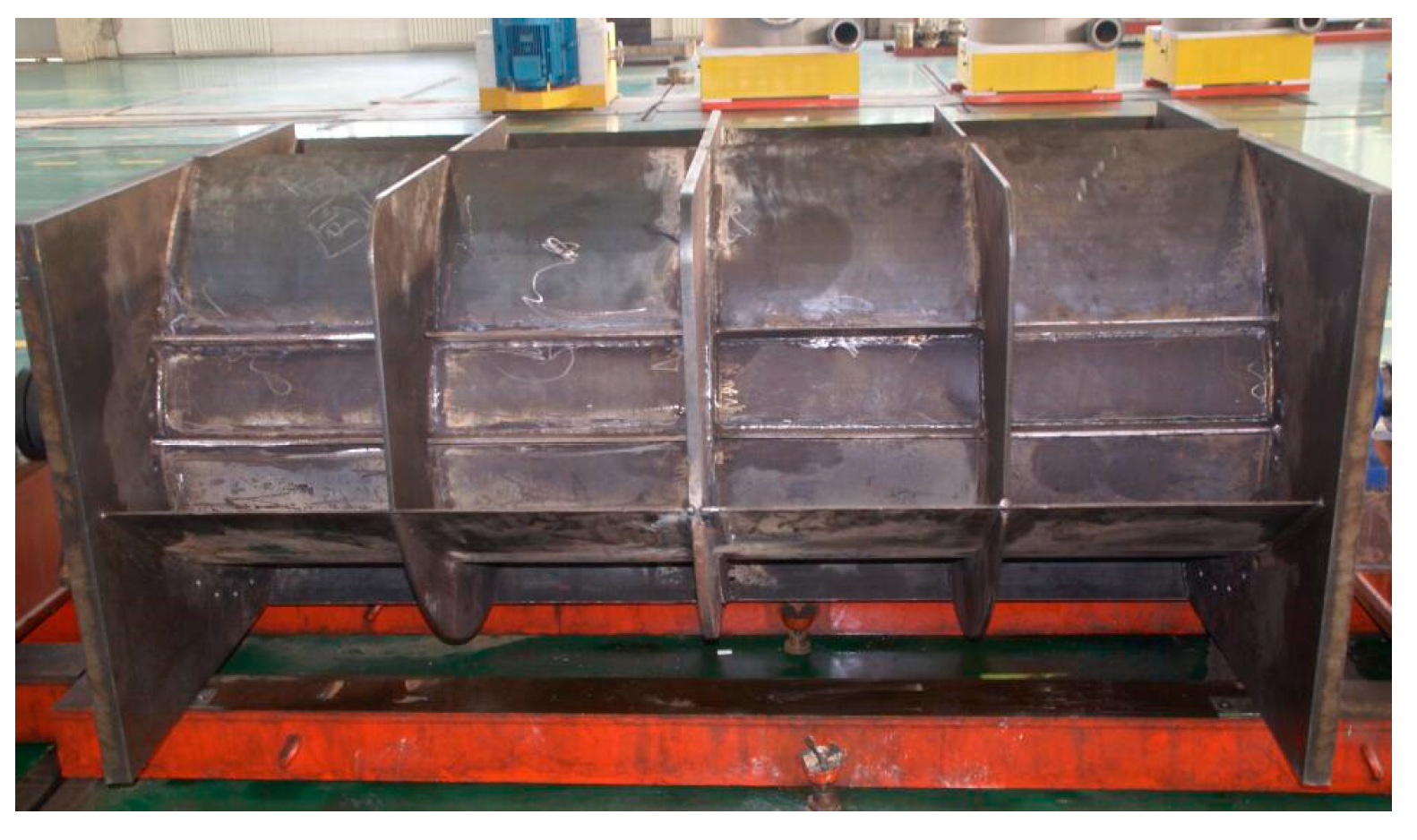

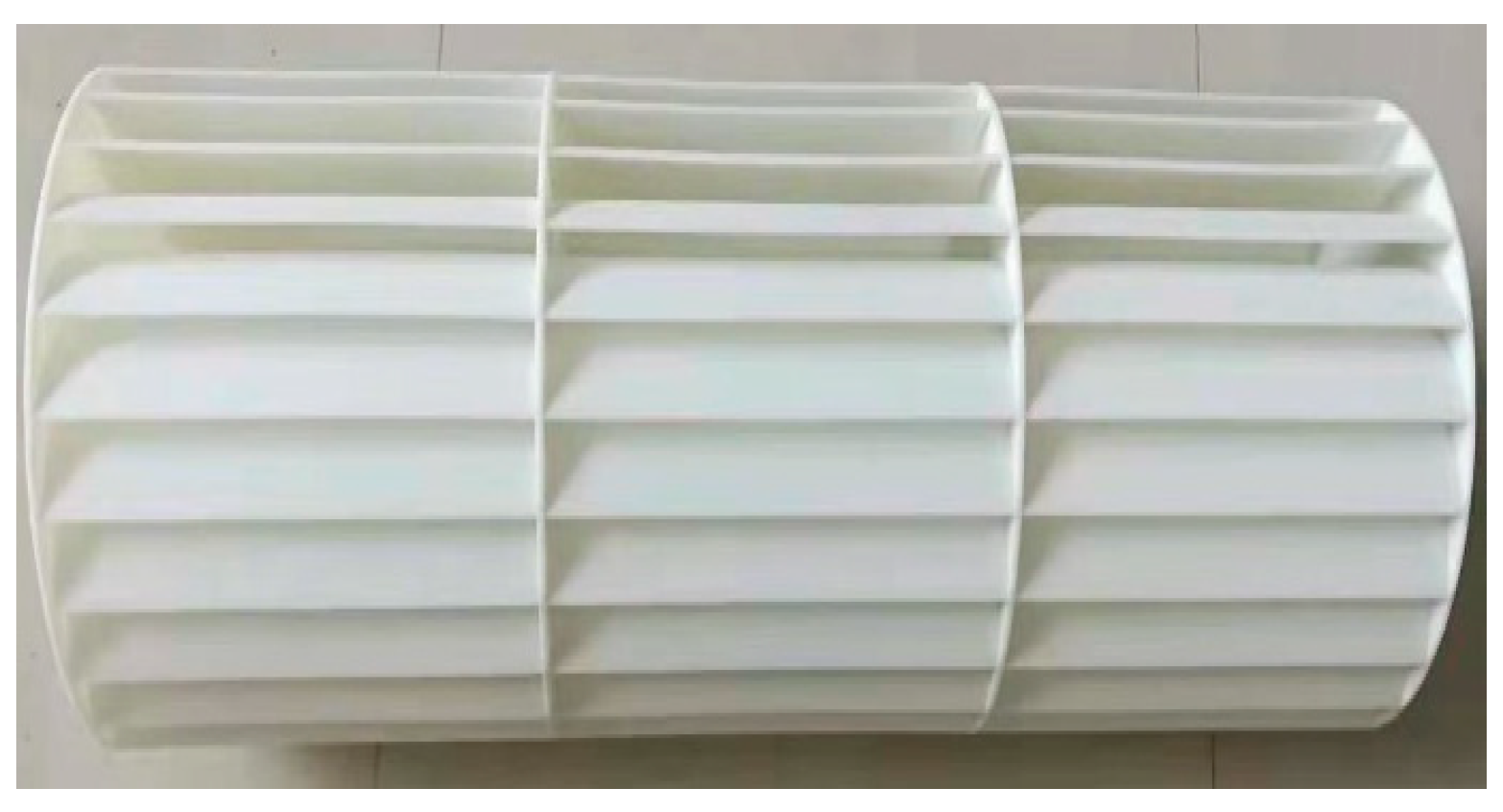
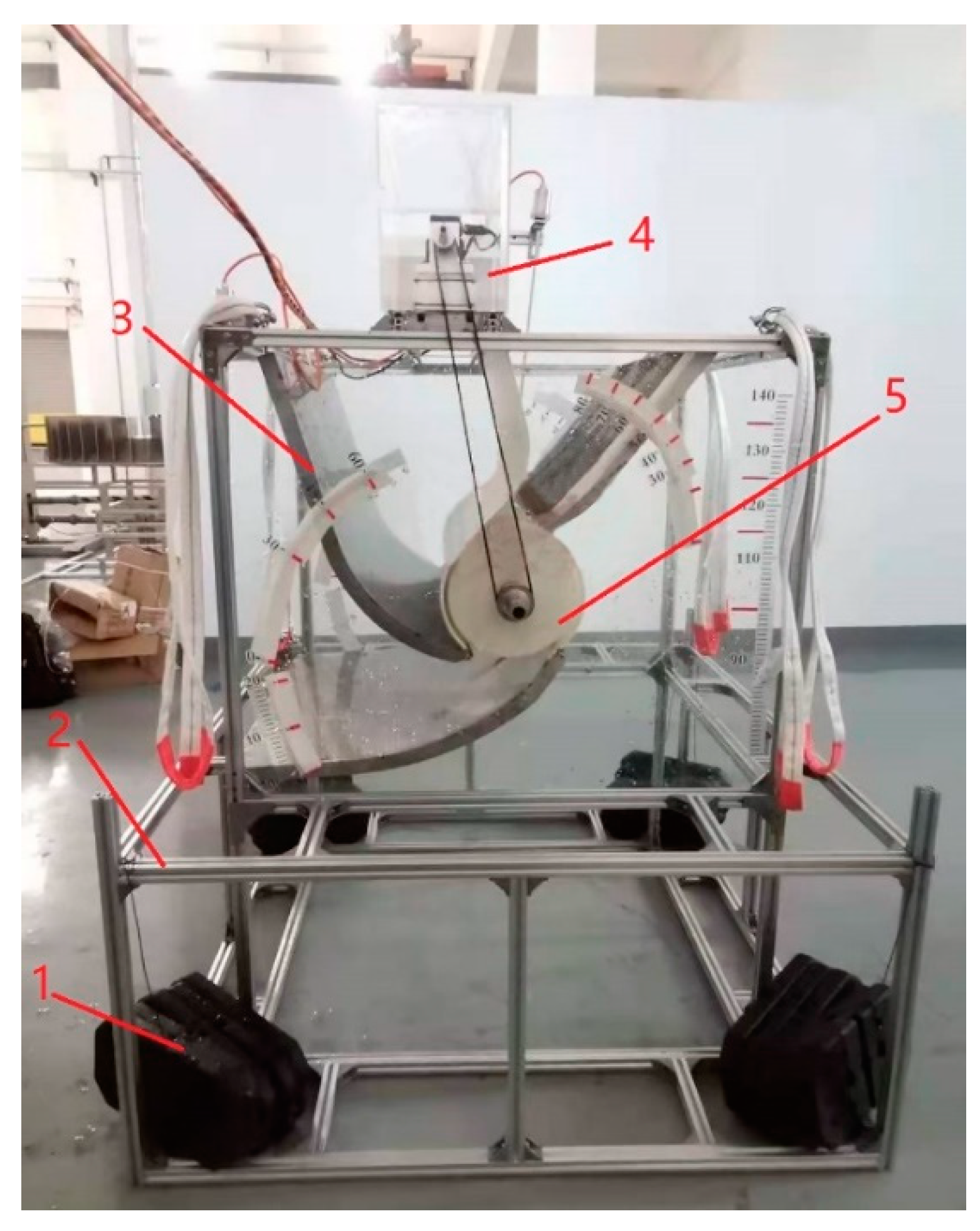
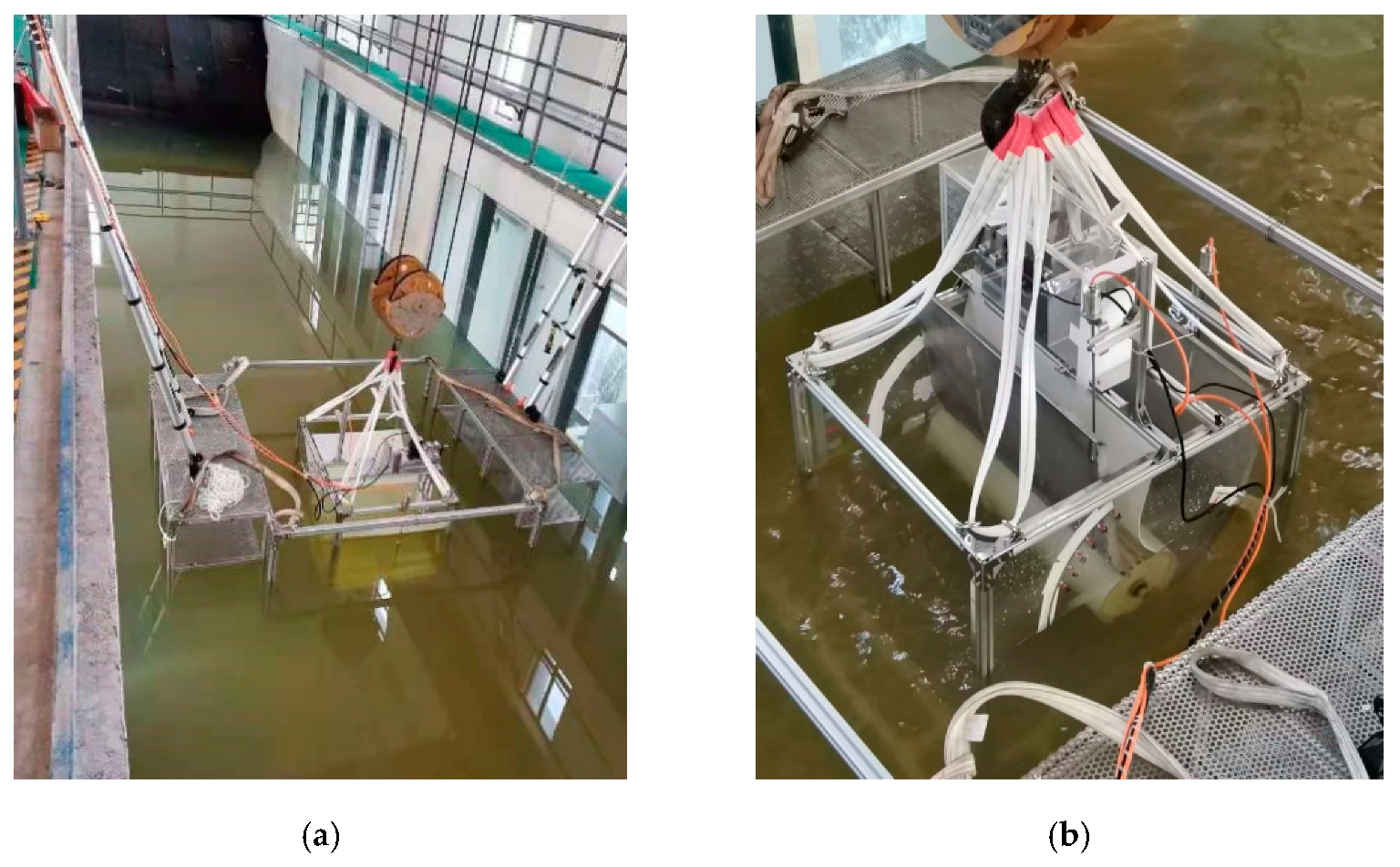

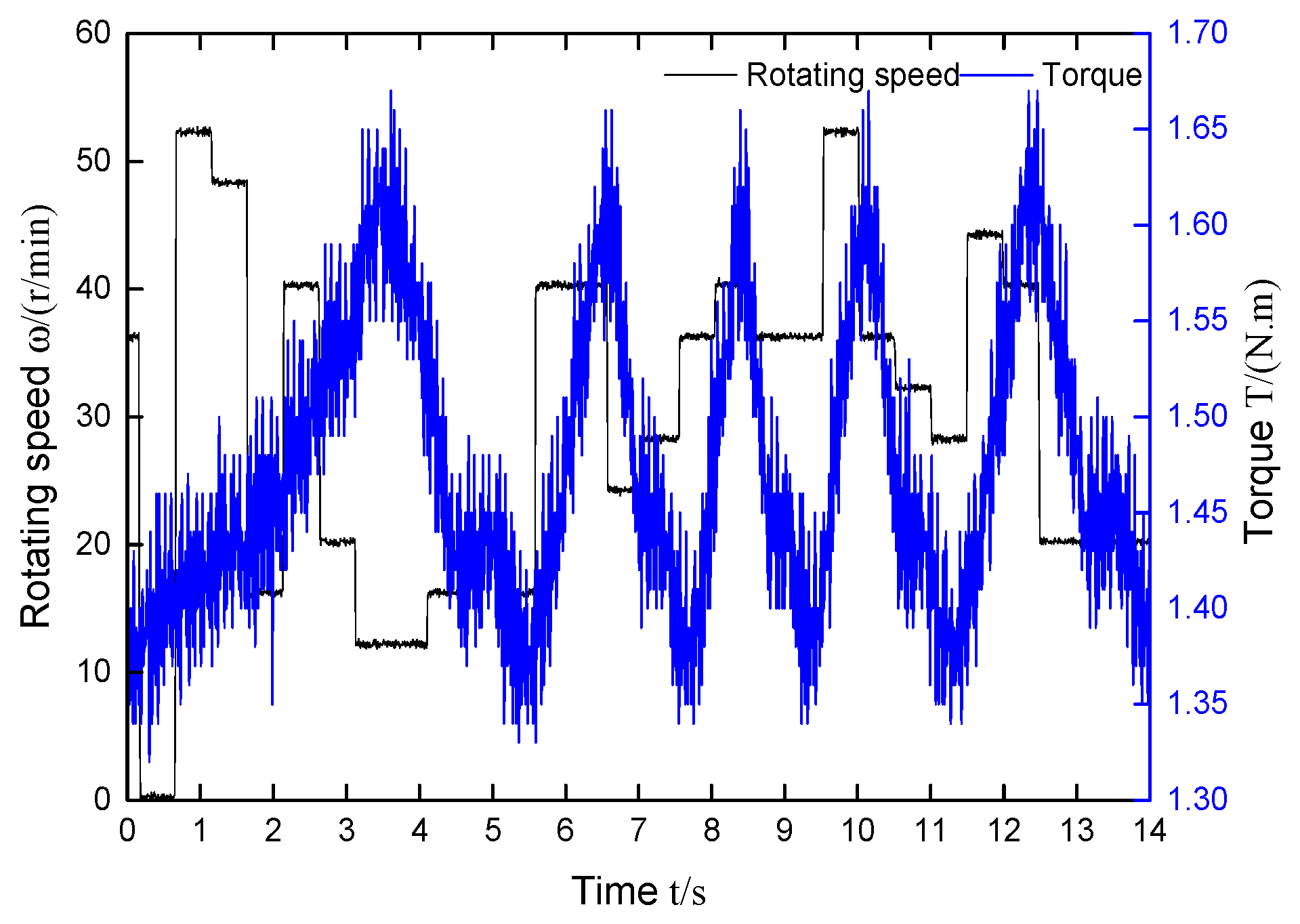
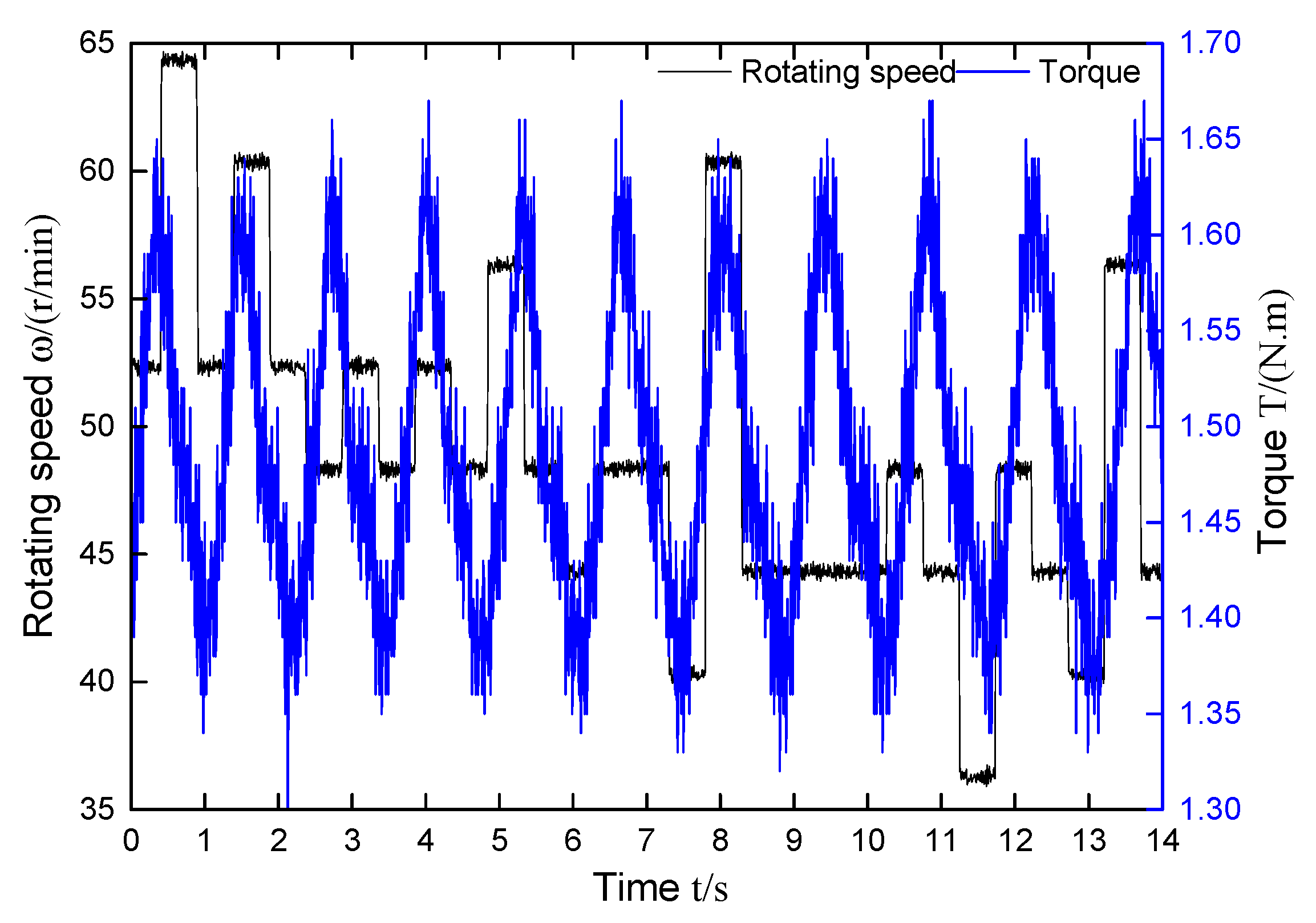

| Country | Project Under Planning (kW) | Under Development (kW) | Running (kW) | Total (kW) |
|---|---|---|---|---|
| Canada | 0 | 0 | 11 | 11 |
| New Zealand | 0 | 20 | 0 | 20 |
| Denmark | 38 | 12 | 1 | 51 |
| Italy | 0 | 150 | 0 | 150 |
| Mexico | 100–200 | 0 | 0 | 200 |
| Spain | 0 | 230 | 296 | 526 |
| South Korea | 0 | 830 | 135 | 965 |
| China | 0 | 400 | 300 | 700 |
| Portugal | 350 | 0 | 400 | 750 |
| United States | 1335 | 500 | 30 | 1865 |
| Sweden | 0 | 0 | 3200 | 3200 |
| Ireland | 5000 | 0 | 0 | 5000 |
| Parameter | Engineering Prototype | Model Prototype | Unit |
|---|---|---|---|
| Total Height | 5443 | 1800 | mm |
| Length of Power Generation Section | 6000 | 1100 | mm |
| Width of Power Generation Section | 4412 | 900 | mm |
| Height of Power Generation Section | 2948 | 920 | mm |
| Rotor Diameter | 625 | 250 | mm |
| Rotor Length | 2000 | 800 | mm |
| Experiment Condition | Prototype Value | Model Value | ||
|---|---|---|---|---|
| Parameter | Wave Height H (m) | Cycle T (sec) | Wave Height H (m) | Cycle T (sec) |
| Case 1 | 0.25 | 2 | 0.10 | 1.26 |
| Case 2 | 0.30 | 2 | 0.12 | 1.26 |
| Case 3 | 0.35 | 2 | 0.14 | 1.26 |
Publisher’s Note: MDPI stays neutral with regard to jurisdictional claims in published maps and institutional affiliations. |
© 2020 by the authors. Licensee MDPI, Basel, Switzerland. This article is an open access article distributed under the terms and conditions of the Creative Commons Attribution (CC BY) license (http://creativecommons.org/licenses/by/4.0/).
Share and Cite
Meng, Z.; Liu, Y.; Qin, J.; Chen, Y. Mathematical Modeling and Experimental Verification of a New Wave Energy Converter. Energies 2021, 14, 177. https://doi.org/10.3390/en14010177
Meng Z, Liu Y, Qin J, Chen Y. Mathematical Modeling and Experimental Verification of a New Wave Energy Converter. Energies. 2021; 14(1):177. https://doi.org/10.3390/en14010177
Chicago/Turabian StyleMeng, Zhongliang, Yanjun Liu, Jian Qin, and Yun Chen. 2021. "Mathematical Modeling and Experimental Verification of a New Wave Energy Converter" Energies 14, no. 1: 177. https://doi.org/10.3390/en14010177




